Business Platinum Card from American Express
130,000 MR points
Here at Prince of Travel, I don’t discriminate when it comes to places in the world I want to go. I’ll take a weekend in Paris or a Caribbean beach vacation any time of the year, clichéd as these may be. I’d also happily venture to some of the farthest reaches among land and sea, just to see what Earth looks like there. Here’s a list of seven trips I would love to take someday, each to a relatively isolated, unexplored corner of the globe.
90% of Canada’s population lives within 100 miles of the United States border, and many Canadians rarely venture beyond their cocoon in the vicinity of the 49th parallel. That’s absolutely astonishing to me given the vast range of natural beauty that our country offers further up north. From the polar bears in Churchill, Manitoba to the endless icescapes of Nunavut’s High Arctic, you’ll find much to appreciate in our country’s vast lands.
Of course, partly to blame is the fact that domestic travel in Canada is far too expensive, but a look around a bit and you’ll see that not all is lost. As I’ve mentioned before, flying to Nunavut’s remote Inuit communities costs only 25,000 Aeroplan miles for a round-trip. Also, hunt for deals on Via Rail’s twice-weekly Winnipeg–Churchill train service, which snakes up north through the prairies of Manitoba to bring you from metropolitan Canada to the shores of Hudson’s Bay in a couple of days’ time.
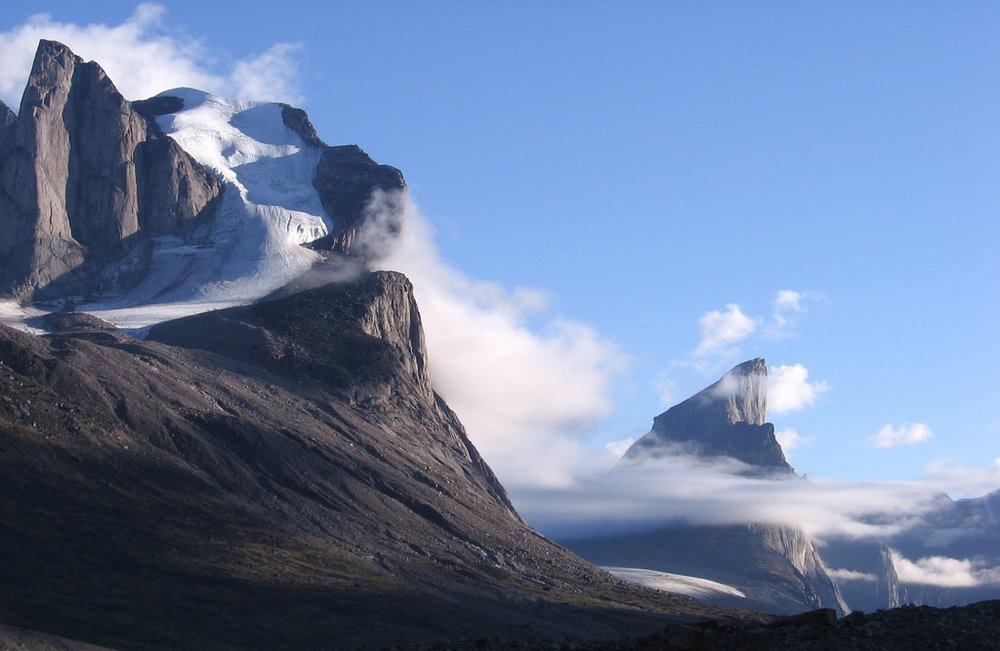
Mount Odin, Nunavut, Canada
Embattled in its claim as the southernmost city in the world (don’t tell the Chileans), Ushuaia is the capital of Tierra del Fuego province in Argentina and a popular secondary stop for visitors after having taken in the charm of Buenos Aires.
There’s a lot to do here: from hiking the Patagonian hillside to skiing in the Southern winter. Plus, Ushuaia is a popular jumping-off point for Antarctic cruises, so you’ll probably spend some time here if you’re looking to check the seventh continent off your list.
Flying is definitely the easiest way to get here, with daily flights connecting the city’s airport (USH) to Buenos Aires and Santiago. You can also take the scenic route and drive through the Patagonia region – highly recommended for the views alone.
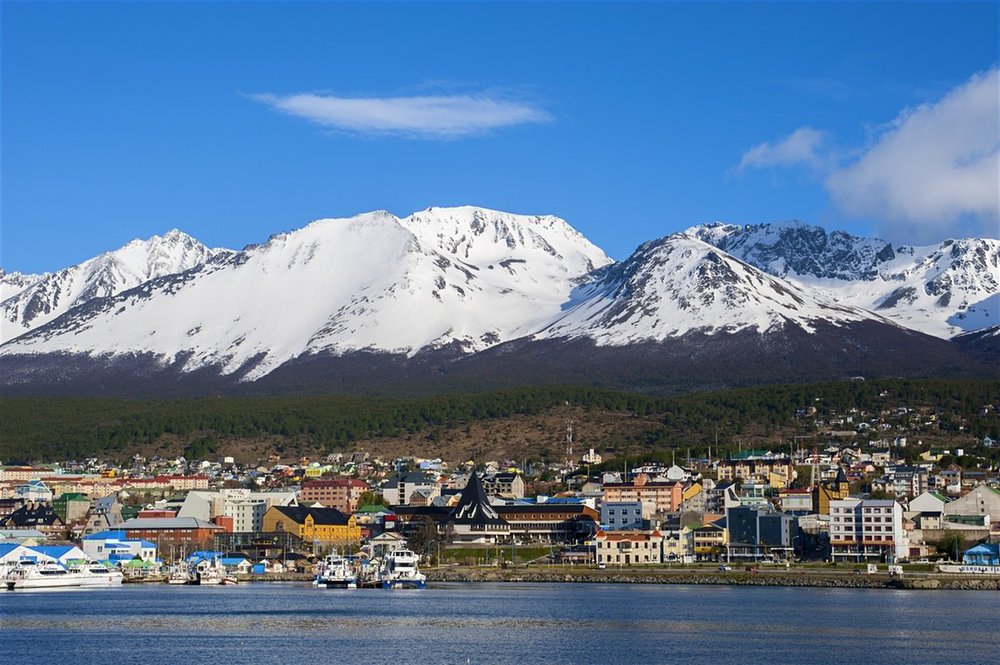
Ushuaia, Tierra del Fuego, Argentina
The Derweze Gas Crater, commonly known as the Door to Hell, is located smack dab in the middle of the Karakum Desert in Turkmenistan. The result of an industrial disaster more than 40 years ago and a haven for pyromaniacs the world over, the Door to Hell is a real sight to behold. (It had better be, given that it’s the only noteworthy sight within a five-hour drive.)
To visit, fly to Ashgabat (ASB), Turkmenistan’s capital (your choices include Turkish Airlines, Lufthansa, China Southern, and the more eclectic Turkmenistan Airlines).
From there, it’s probably best to join an official tour for the five-hour drive out to the Door to Hell, since a good portion of the trip involves off-roading on the soft sand of the Karakum. Some tours camp out by the burning gas pit for a night – no need to light a bonfire!
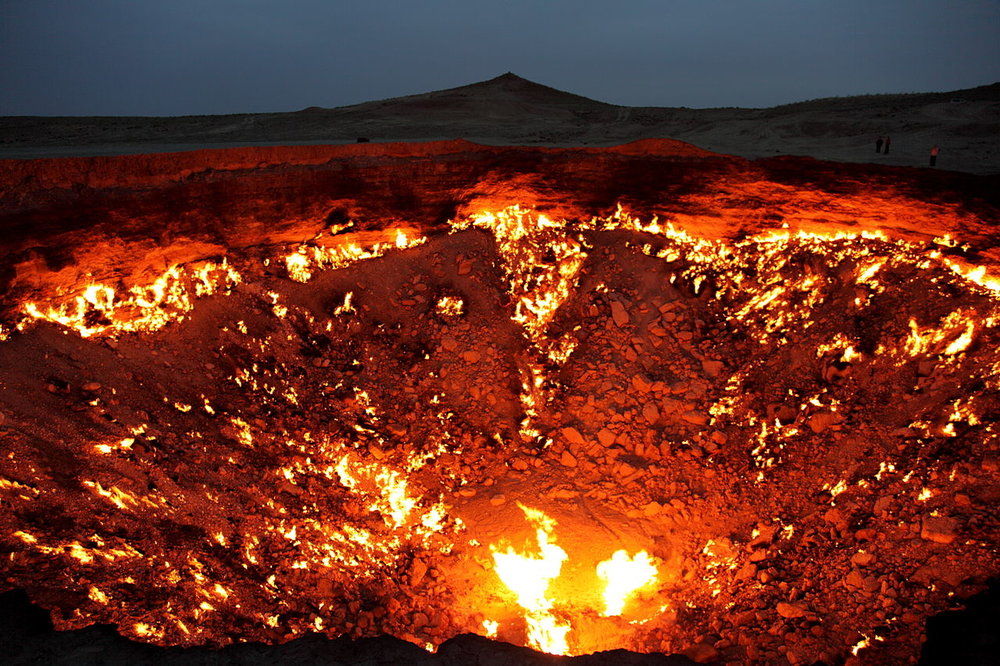
Door to Hell, Turkmenistan
When you think of Russia, it’s probably Red Square in Moscow and the canals of St. Petersburg that come to mind. Indeed, about 80% of Russians live west of the Ural Mountains in European Russia.
But what’s most fascinating to me is the unimaginably vast swathes of land that extend from the Urals eastward, playing host to millions of square kilometres of forest, plains, tundra, and taiga, and coming to an end mere miles away from Alaska.
I’d love to take the Trans-Siberian railway across the region over several weeks, exploring the various metropolises and Soviet-era settlements that dot the landscape. From there, the possibilities are endless – stay in your train car for the onward journey to Mongolia and Beijing, venture out to Sakhalin Island and catch the ferry to Japan’s Hokkaido, or channel your inner daredevil on the “Road of Bones” in one of the most bitterly cold regions of the world.
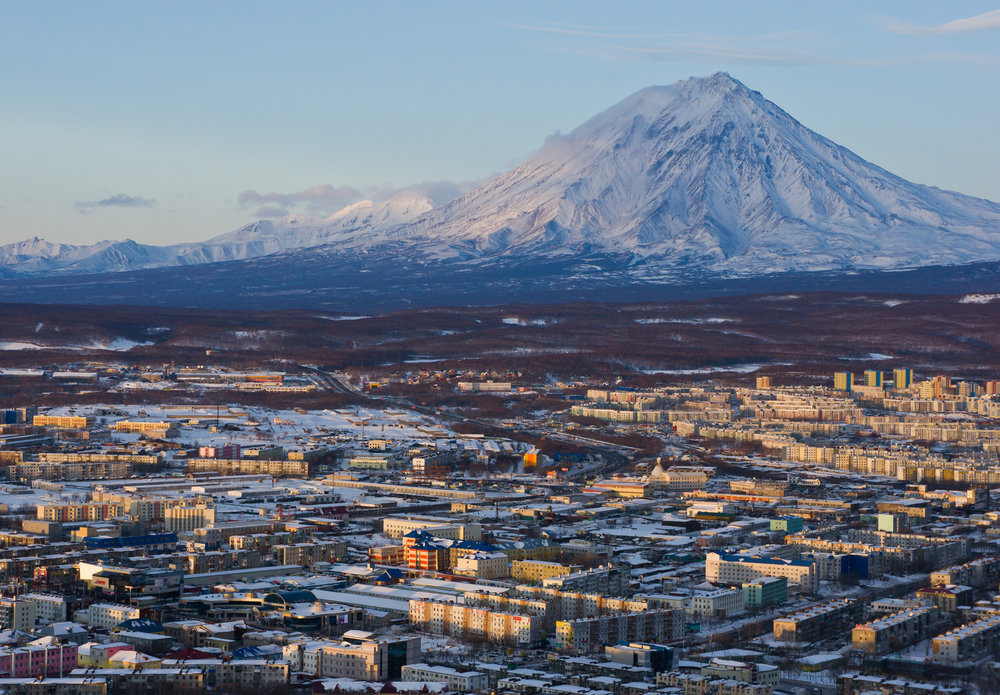
Petropavlovsk-Kamchatsky, Kamchatka Krai, Russia
If you want to talk remoteness, the conversation inevitably shifts to the remote islands of the world. The Pacific Ocean is home to thousands of such islands, and this list would go on forever if I were an honest man and detailed every little island I’d love to set foot on. But let’s concentrate on Kiribati (pronounced “kiri-bas”): a rarely visited, relatively poor archipelago in the Micronesia region.
This place has none of the overwater villas of Bora Bora, nor the fancy resorts you’d find in Hawaii. What it does have, however, is the privilege of having the first sunrise on Earth every calendar day.
Ever look at a map and see the International Date Line going berserk in the middle of the Pacific Ocean? That’s Kiribati, and its easternmost Caroline Island was the first piece of land on Earth to witness the new millennium, and indeed every passing day.
I’d find it supremely cool to sit on the eastern shore of the tiny Caroline Island and watch the sunrise, knowing I was the first person on Earth to witness this particular cycle. The only problem is that it’s almost impossible to get here. Getting to Kiribati itself is already hard (booking Fiji Airlines using Alaska miles is a good option), but Caroline is currently a wildlife reserve that sits 2,600 miles east of Kiribati’s capital, Tarawa, with no airstrip or scheduled boat services. One for the bucket list, I suppose…
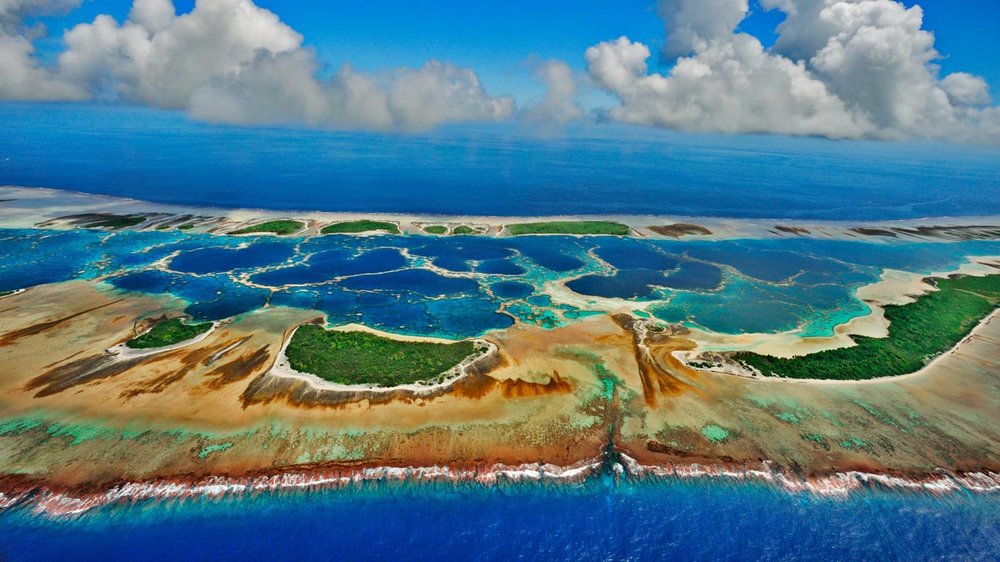
Caroline Island, Kiribati
Easter Island needs no introduction. Home to around 5,800 residents and 877 monumental stone statutes known as moai, this Chilean special territory in the southeastern Pacific Ocean, also known as Rapa Nui in the indigenous language, is one of the most mysterious places on Earth and hosts thousands of tourists a year.
I very much intend to make this trip within the next year or two, so this is one I can hopefully check off the list relatively soon.
LATAM serves Easter Island’s Mataveri Airport (IPC) from Santiago and also has onward service from Easter Island to Tahiti, which can make for an epic island-hopping trip. Easter Island is so isolated from any other airport that only one plane can be within a certain distance from it (either approaching or departing) at any one time due to the lack of diversion options in the region.
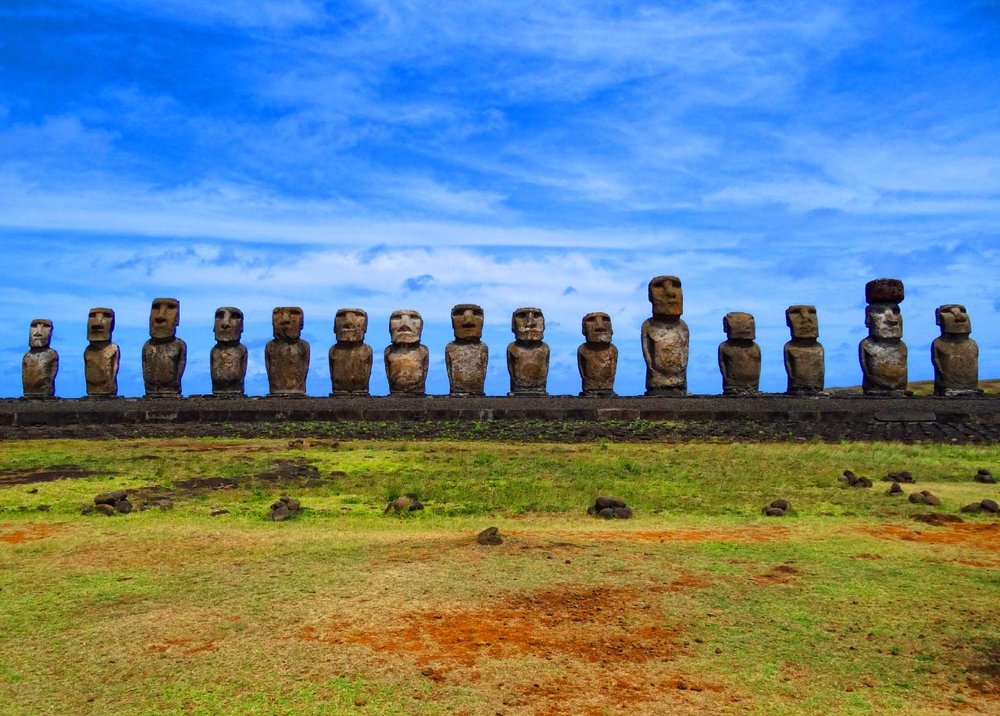
Moai on Easter Island
So far, every place we’ve talked about is reachable by plane, bus, or car, but some places are so off-the-grid that planning a journey revolves around ship services that operate a few times a year. Tristan da Cunha is one such place.
Tristan is a British Overseas Territory of about 270 inhabitants. There’s no airstrip on the island, which is basically a giant volcanic cone protruding from the South Atlantic Ocean. Hence, the only way to get there is by ship, and you can take your pick of about nine departures from Cape Town per year, on various polar research ships or fishing vessels.
The 1800-mile journey takes five to ten days, and once you’re on the island, it can be a matter of weeks until the next scheduled departure takes place, so this is definitely one for the truly intrepid.
What’s there to do on Tristan, you ask? Honestly, not a whole lot. When you’re done climbing the volcano and checking out the other islands in the archipelago, all that’s left is to marvel at the ends of the earth.
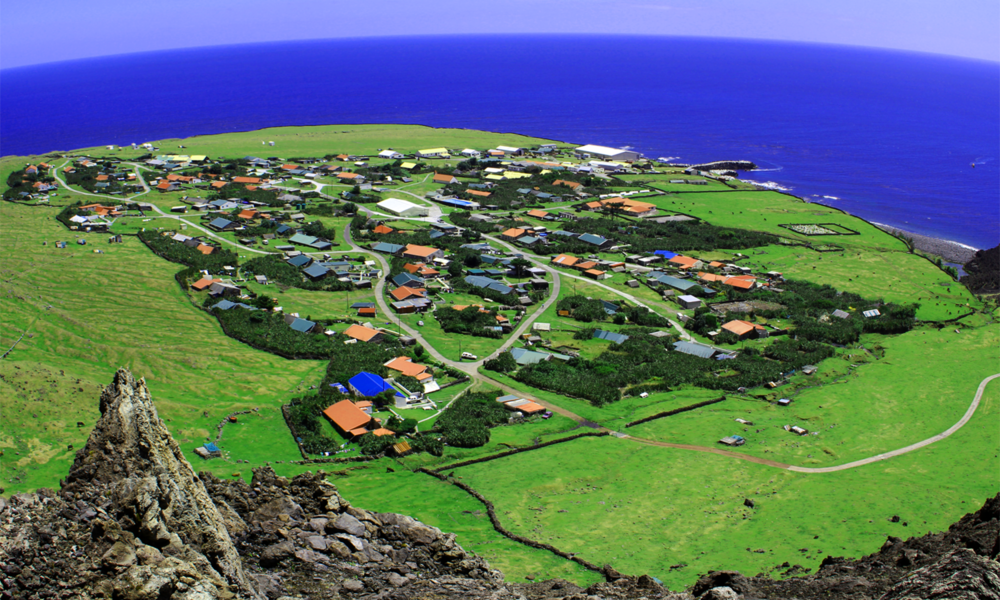
Edinburgh of the Seven Seas, Tristan da Cunha
There are different degrees of remoteness. Some places are simply far away from other settlements, while others are difficult to reach, plain and simple. Yet other places are so far removed from both continental landmasses and the public consciousness that it’s hard to believe they really occupy the same Earth as the rest of us. All are interesting in their own right, and while some of the remote outposts on this list are less realistic than others at this time, I do hope to catch a glimpse of all of them sometime down the road.
*I visited Easter Island last year.
Hi Ricky,
We met at PointsU in Toronto last year!
I visited last year. One of the highlights for me was knowledge of exactly what you describe:
"Easter Island is so isolated from any other airport that only one plane can be within a certain distance from it (either approaching or departing) at any one time due to the lack of diversion options in the region. "
Ilya